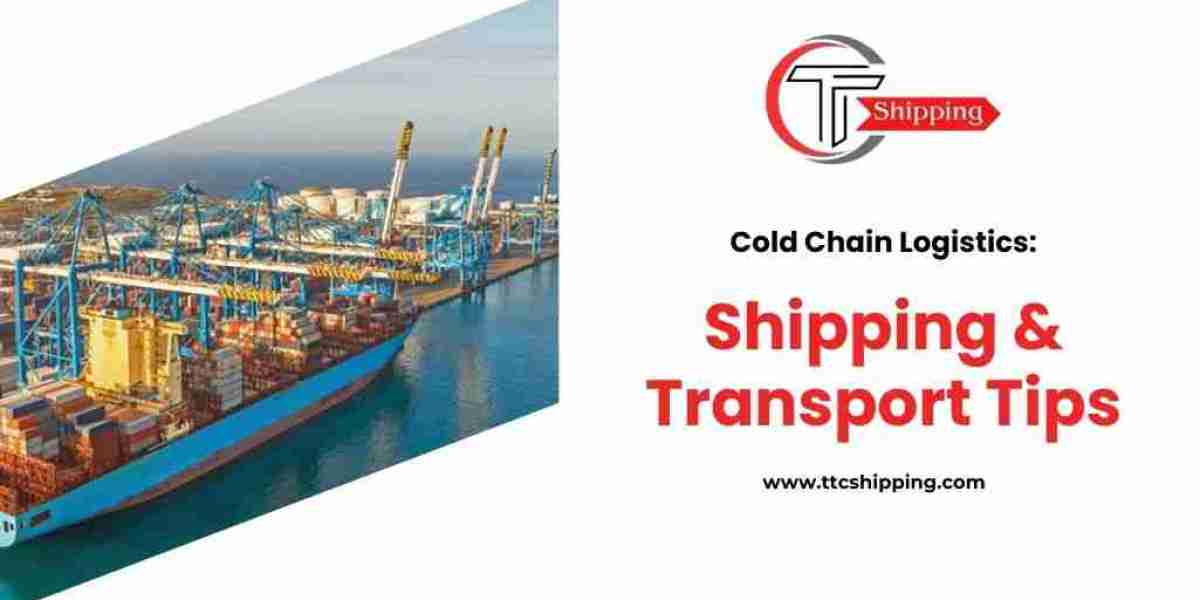Cold chain logistics is a critical component to uphold the quality and safety of products that are deemed temperature-sensitive. This includes perishable food, pharmaceuticals and biological products. The importance of maintaining the right temperature cannot be underestimated in regards to transporting a temperature-sensitive product from origin to destination. The method of transportation, whether rail cargo service, air cargo service or road freight services, is an important consideration not only to maintain product integrity, but also to comply with industry standards.
Understanding Cold Chain Logistics
Cold chain logistics is defined as the process, often highly specialized, of transporting temperature-sensitive goods within a supply chain that is outfitted with regulated temperature storage and transportation mechanisms. With the goals of preventing spoilage, degradation, and loss of product quality, a consistent environment must be created. The ability to do so is important in important supply chain networks, such as that found in healthcare, agriculture, frozen/chilled food supply, etc.
The building blocks of cold chain logistics consist of:
Temperature Monitoring Systems that track the conditions in real time.
Temperature controlled vehicles for transportation.
Insulated packaging that reduces heat transfer.
Modes of Transport in Cold Chain Logistics
1. Railway Cargo for Cold Shipments
Rail cargo is a viable, low-impact and effective global transport option for moving large freight over long distances. For cold chain logistics, refrigerated rail cars are called for in a specialized environment to maintain steady temperature throughout the journey. This is ideal for bulk shipments of frozen food or dairy as it has greater load capacity and cost efficiency than other options will offer.
Advantages:
Cost effective for bulk transportation.
Lower carbon footprint than road or air.
Temperature consistency using specialized wagons.
2. Air Cargo Services for Time-Sensitive Goods
When speed is the key factor the preferred option in cold chain logistics is air freight services, perfect for pharmaceuticals, vaccines, fresh seafood or flowers, that intend to reach markets sooner. This mode is well-suited for temperature-controlled containers and short transit times giving way to minimal exposure to temperature variations.
Pros:
Fastest shipping option.
International cold chain logistics reach.
Lower spoilage risk due to travel time.
Limited space for large shipments.
3. Road Freight Services for Flexible Deliveries
Road freight services continue to be one of the most flexible modes for cold chain logistics and, of course, they include valuable door-to-door services. Refrigerated trucks can take product directly to the retailer, restaurant, hospital, and warehouse facilities without any intermediate handling.
Advantages:
Door-to-door service to the received locations.
Flexibility to choose routes and times.
Working in concert with shorter or long haul transport.
Challenges:
Traffic exposure, hence potential delays.
Fuel costs can create a challenge with freight rates.
Best Practices for Cold Chain Logistics
1. Choose Proper Packaging
Packaging is a key component of cold chain logistics. When using insulated boxes, gel pack and dry ice in shipping your product, you can control the temperature of your product during freight transit. Oftentimes, it the packaging of the good itself that is a more critical factor in temperature, as the good may undergo temperature variation, or worse, crated-damaged or breakage due to inadequate packing in cases of temperature extremes.
2. Leverage Real-Time Tracking & Monitoring
Leveraging IoT temperature monitoring systems will allow you to monitor in real time and take immediate action if the good undergoes any temperature deviations from it's intended temperature range during transport. In the end your company's commitment to quality and expedient safety compliance will depend heavily on this.
3. Develop and Plan Trusted Routes and Schedules Carefully
Whether it is through railway cargo, air cargo services, or road freight services, developing reliable routes and planning schedules can help cut down on overall shipping time and reduce the chance of temperature excursions. Weather and seasonal schedules also need to factor into routes and schedules.
4. Train Staff Treating Sensitive Goods
Cold chain logistics will require proper training for drivers, warehouse workers, and at times, logistics coordinators to deal with perishable/temperature sensitive goods while also ensuring quality.
5. Keep Compliant
Cold chain logistics in different countries has its own regulations to adhere to. Many countries will have regulatory requirements when it comes to cold chain logistics (besides general shipping requirements), but the most regulated industries will be pharmaceuticals and food. Firms need to be compliant in their regulatory standards such as GDP (good distribution practices) and HACCP (hazard analysis critical control points).
Choosing the Right Transport Mode
When deciding between rail cargo, air cargo services, and road freight services in cold chain logistics, consider:
Type of goods: perishability, temperature sensitivity, and Shelf life.
Urgency: Air cargo services for urgent needs; rail cargo and road freight services for shipment not as time sensitive.
Cost: Rail is usually more affordable for bulk goods, air cargo services are more expensive but have a quicker transit time.
Destination: Typically air freight is require for international delivery, while rail or road is typically tried for domestic bulk deliveries.
Using Multiple Modes of Transportation
Many companies use a multi-modes of transportation for cold chain logistics, e.g. rail cargo may be used for long distance bulk transport, and road freight services may make the final delivery. Air cargo services may be combined as part of the cold chain logistics if high value, time sensitive items are included.
Common Challenges in Cold Chain Logistics
Temperature excursions: Moving temperatures outside of the proper range will lead to spoilage.
Delivery Delays: Delivery schedules can be delayed due to traffic, weather, or customs clearance.
Costs: Anytime you use refrigerated truck or specialty transport it will cost more.
Infrastructure: Depending on the area, cold-chain infrastructure may be limited especially for the transportation of cargo by rail.
Conclusion
Cold chain logistics is essential for industries reliant on temperature-controlled transport. When utilising rail cargo, air cargo services or road freight services, the essentials are cold temperature control, cold monitoring and cold handling procedures.
Here at TTC Shipping we understand the nuances of cold chain logistics and can offer specifically designed solutions for all types of cold chain matters globally. We can accommodate from sophisticated temperature monitoring to coherent transport planning! TTC Shipping can provide fresh delivery of goods in all forms, safe and sound!
Blending precision temperature monitoring with an expert team on handling temperatures throughout the transit and delivery periods ensures that your goods will arrive safely, on time and delivered fresh! By matching innovation with professional handling procedures, TTC Shipping offers unrivalled reliability when it comes to cold chain logistics!







